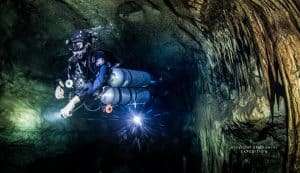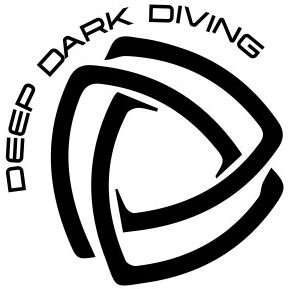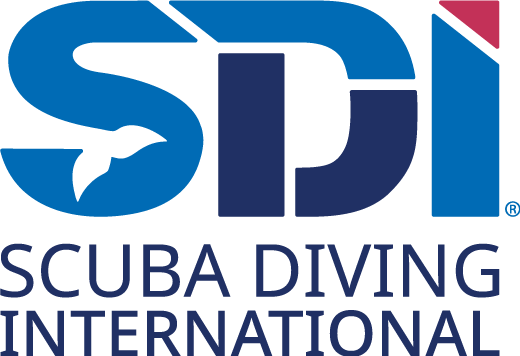Technical Diving Training in the cenotes of Mexico
Extend your limits and Dive Deeper, Dive Further, Dive Safer
Passionate about diving and hungry to enhance your dive skills? Discover our specialized technical diving courses tailored to elevate your diving expertise.
When selecting a technical diving instructor, prioritize compatibility, experience, up-to-date expertise, and a genuine love for diving. Your instructor should not just teach but also safely impart their enthusiasm for the underwater world.
Invest ample time in choosing the ideal technical diving instructor for your journey. Reach out to us to begin the conversation. We’re dedicated to steering you toward the perfect match for your diving aspirations.
INTRO TO TECH & SIDE MOUNT
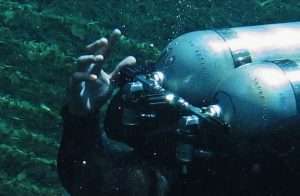
Dive deeper into your passion with TDI Intro to Tech training! Gain essential technical skills and confidence for thrilling underwater adventures.

Acquire the skills that will open up new dimensions in your diving adventures.
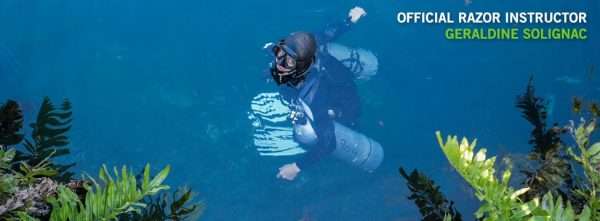
Uncover the secrets of sidemount diving and master the art of using the incredible Razor equipment. Join us to unlock unparalleled underwater adventures today!
TECHNICAL DIVING
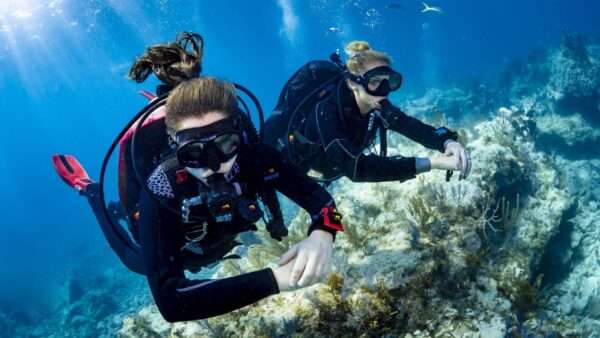
First step to technical diving.
For divers Nitrox certified divers with a recreational agency, it is the opportunity to thoroughly review the basic principles and fundamental laws of physics used in diving.
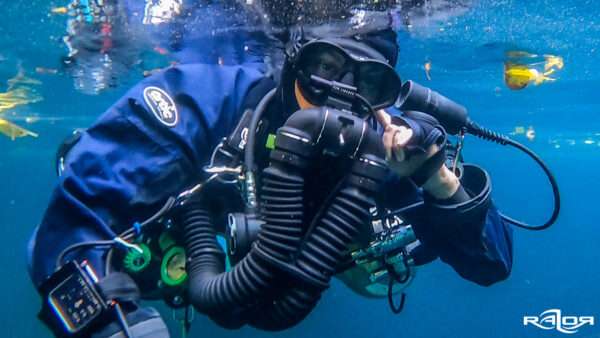
You will learn the physics and physiology of diving with gas mixtures containing more than 40 % oxygen. This is the opportunity to further extension of your dive time without going into decompression limits.
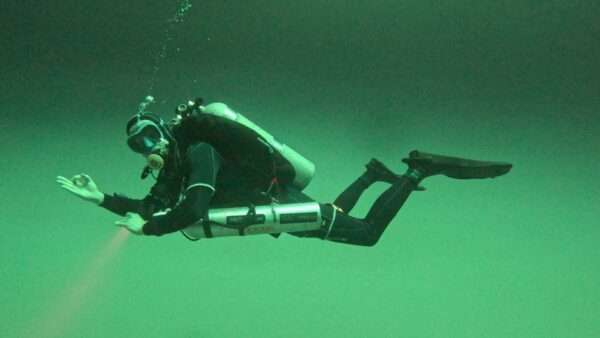
As you become a Deco Procedures diver, you will learn to safely plan and execute dives with decompression, choose your gas, and develop emergency plans.
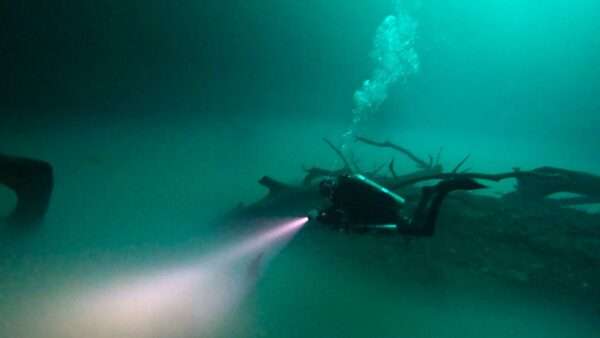
Exciting dives down to 55m/180ft but helium is nowhere available? you will learn how to do these dives using air and deco gases safely.
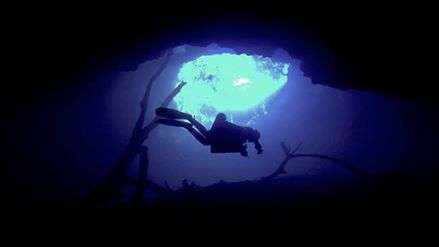
Dive deeper and safer with TDI Trimix Training today! Master using Trimix for precise planning and safety on deep dives. environments.
CCR REBREATHER TRAINING
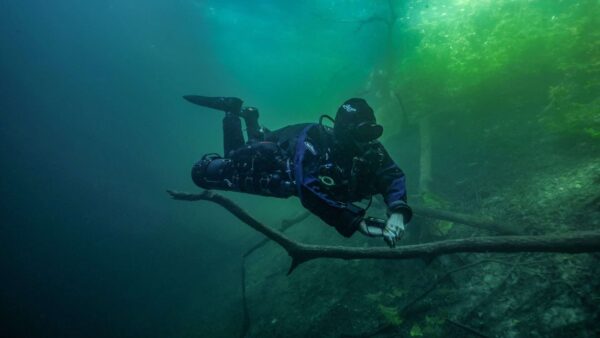
Physics and physiology of diving with gas mixtures containing more than 40 % oxygen. This is the opportunity to further extend your dive time without going into decompression limits.
Prerequisite to CCR rebreather diving.
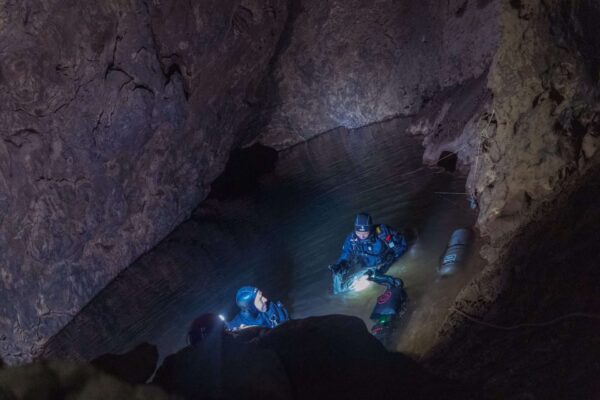
For rebreather divers interested in trying a new unit or looking to decide on their first unit.
Contact us for a try dive with a certified instructor

For rebreather divers interested in changing unit or giving a try to the Sidemount Liberty and learn new skills.

Closed-Circuit Rebreathers (CCR) from a side-mounted perspective. Master the art of silent, extended dives with in-depth theory and practice. Experience enhanced maneuverability, gas efficiency, comfort, versatility and streamlined configuration.
INTRO TO TECH DIVING CERTIFICATION

Elevate Your Dive Skills, and become an Intro to Tech Diver!
With enhanced planning, in-water skills, and gear setup, the training will unlock your proficiency, expand your knowledge, and you will become a skilled diver.
Why become an Intro to Tech Diver?
For experienced open divers with a passion for tech or cave diving. The transition from single back-mounted tank to twinset for enhanced skills and safety.
If you wish to move straight to a Sidemount configuration, we recommend you to check the TDI Sidemount course or the Razor Side Mount course from Go Side Mount, you will cover the basics and fundamentals of the Intro to Tech course in Side Mount configuration.
Still hesitating between Sidemount and backmount configurations? Ask for try dives a two-days program where you get to try both configurations with an experienced instructor, learn the basics, and safely do a try dive.
Be prepared to change your mindset and start focusing on details. We will emphasize safety while learning new swimming techniques, including the famous back kick! And more essential diving skills such as sharing gas with a long hose and performing a valve drill in backmount configuration. You will greatly expand your diver’s knowledge and start your technical diving training.
PREREQUISITES
- Minimum age 18, 15 with parental consent
- Minimum certification: Open Water Scuba Diver or equivalent
- 25 logged dives
DURATION
- 2 days Minimum
- Number of Dives: 4 minimum (no dives should exceed 23 Metres/75 Feet.)
- Theory* Including TDI e-learning Intro to Tech + Advanced Nitrox + Deco Procedures
- Briefing hours: minimum 6 hours
*TDI e-learning at your own pace before the start of your dive training in the cenotes of Mexico
QUALIFICATIONS
- The diving activities approximate those of training.
- The areas of activities and environmental conditions approximate those of training.
- Graduates may enroll in: TDI Advanced Nitrox Course, and TDI Decompression Procedures Course.
GEAR
- Primary cylinder(s)
- Primary regulators (Primary and alternate second stage, SPG on all primary cylinders)
- Depth gauge and bottom timer and/or dive computer.
- Buoyancy compensator
- Reel with lift bag/surface marker buoy
- Exposure protection appropriate for local diving conditions.
- Slates/wet-notes.
WHAT’S INCLUDED
- 4 dives min
- Academics*
- Tanks
- Weights
- Transport to the dive site
- Emergency Oxygen
- Drinking water
NOT INCLUDED
- Pick up
- Cenote entrance fees
- Certification Fee
- Gases >32% (Student and Instructor)
- Equipment
ACADEMICS
- Physics: (Pressure review)
- Physiology (Ascent/descent rates, Hyperthermia, Hypothermia, Psychological aspects)
- Equipment Considerations (Single/double cylinder(s); valves, Regulators, Harness/BCD, Computer, bottom timer, depth gauge; Reels/spools; Lift bag/surface marker bag; Exposure protection; Minimum equipment, bring only what is needed; Streamlining and stowing equipment
- Dive Planning (Tables/computer dive planning and execution; Surface air consumption (SAC) rate calculations; Minimum gas reserve calculations for no-decompression dives; Environmental considerations)
- Procedures (Entry/exit; Emergency, gas failure/loss; Ascent/descent)
LAND DRILLS
- Select and prepare equipment.
- Team-oriented lift bag deployment.
- Gas matching.
- Hand signals.
- Pre-dive planning with limits based on gas consumptions.
PRE-DIVE DRILLS
- Use S.T.A.R.T. before every dive.
- Stress analysis and mitigation.
* START is S-drill (OOG drill and Bubble Check), Team (buddy equipment checks), Air (gas matching), Route (entry/exit and planned path underwater), Tables (depth, duration, waypoints, and schedule)
SKILLS
- Weight check
- Buoyancy control
- Trim
- No-silting propulsion techniques: frog kick, modified frog kick, modified flutter kick, backwards kick.
- Perform all skills while maintaining trim and buoyancy (Regulator exchange, Regulator recovery, Mask removal and clear with minimal air loss)
- Safety drill (S-drill)
- Valve drill
- Deploy a SMB or lift bag
- Good situational awareness.
TRAINING CENOTES
- Cenote Eden,
- Cenote Kukulkan
- Cenote Xtabay
- Cenote Carwash
- Cenote Chikin Ha
- Cenote XTabay,
- Cenote Taj Ma Ha
- Cenote Chac Mool
- and more…
TDI SIDE MOUNT DIVING CERTIFICATION

Side Mount diving looks incredibly easy and comfortable, and yes, it is! When learned and configured properly, the Side Mount configuration has many advantages.
The side Mount technique originates from cavers in the UK in need of a configuration that would facilitate penetration of tight sections of the cave. Additionally, while diving the configuration allows easy access to the valves, provides easy and reliable gas redundancy, and tanks can be easily removed if needed. These benefits for diving in confined spaces.
Advantages of Side Mount Diving
- More flexibility
- More security
- Better streamlining
- Ideal for cave diving
- Very safe and comfortable for open water diving.
Make sure you get the right training from the start and build upon the skills, then practice, practice, and practice some more!
PREREQUISITES
- Minimum age 18, 15 with parental consent
- Minimum certification: Open Water Scuba Diver or equivalent
- 25 logged dives
DURATION
- 2 days Minimum
- Number of Dives: 4 minimum
- Theory: 4h minimum *
*TDI e-learning at your own pace before the start of your dive training in the cenotes of Mexico
QUALIFICATIONS
- Safety and decompression stops as appropriate or necessary
- Planned dives do not exceed diver’s current certification level
GEAR
- Dual cylinders, volume appropriate for planned dive, and student gas consumption
- Two independent first and second stage regulators each with a submersible pressure gauge
- Buoyancy compensator device (BCD) with power inflator appropriate for Sidemount configuration
- Exposure suit adequate for diving environment
- Mask and fins
- Dive computer and an additional depth and timing device; backup computer recommended.
WHAT’S INCLUDED
- 4 dives min
- Academics*
- Tanks
- Weights
- Transport to the dive site
- Emergency Oxygen
- Drinking water
NOT INCLUDED
- Pick up
- Cenote entrance fees
- Certification Fee
- Gases >32% (Student and Instructor)
- Equipment
ACADEMICS
- Gas management using independent cylinders
- Gas matching including dissimilar volumes
- Psychological considerations of technical diving
- Equipment (Cylinder, Regulator, BCD/harness, Weight)
- Communication (light and hand signals)
- Problem solving in sidemount
- Diving in tight or confined spaces
- Conservation
- Water entries/exits
- S-Drills in sidemount
LAND DRILLS
- Plan dive
- Test and check all equipment (depth gauges, bottom timers/watches and computers)
- Familiarization with area
PRE-DIVE DRILLS
- Use S.T.A.R.T. before every dive.
- Stress analysis and mitigation.
* START is S-drill (OOG and Bubble Check), Team (buddy equipment checks), Air (gas matching), Route (entry/exit and planned path underwater), Tables (depth, duration, waypoints, and schedule)
SKILLS
- Weight check
- Attaching sidemount cylinders (Out of water, On surface standing on bottom)
- Buoyancy control
- Trim
- No-silting propulsion techniques: frog kick, modified frog kick, modified flutter kick, backwards kick.
- Perform all skills while maintaining trim and buoyancy (Regulator exchange, Regulator recovery, Mask clear with minimal air loss., Mask removal and clear with minimal air loss, Unclipping and attaching sidemount cylinders, Gas switches with and without a mask)
- Safety drill (S-drill)
- Valve drill
- Deploy a SMB or lift bag
- Regulator switches with one hand
- Equipment failure (bungee, bolt snap, tank clamps, wing, regulators, etc.)
- Descend to planed depth
- Manage gas in independent cylinders
- Monitor depth/time/air consumption, figure all times on slate
- Situational awareness
- Conservation, awareness, and back referencing techniques
- Extra cylinder is optional
TRAINING CENOTES
- Cenote Eden,
- Cenote Kukulkan
- Cenote Xtabay
- Cenote Carwash
- Cenote Chikin Ha
- Cenote XTabay,
- Cenote Taj Ma Ha
- Cenote Chac Mool
- and more…
The basic Side Mount course for tec divers wishing to learn a new configuration. For a more in-depth course in a Razor Side Mount harness, with solid skills to build upon during cave diving or more advanced technical courses.
RAZOR SIDE MOUNT DIVER CERTIFICATION
Worldwide, Razor Side Mount instructors are trained to maximize your learning progress in sidemount diving at any level.
Getting the right equipment and configuring it right is indispensable but still insufficient. Like most activities, you will need proper training to achieve mastery, so why not take advantage of our qualified Razor instructors with years of experience who are ready to share their knowledge with passion?
Basic skills, such as trim, swimming techniques, and buoyancy, are core skills for technical and cave diving and represent the first step for any new side mount diver starting in the configuration.
The Razor Side Mount Course allows you to experience the freedom and flexibility of diving Side Mount at its best. No better place than the cenotes of Mexico for your Razor Sidemount Training, where the Razor was created and where some of the most experienced Razor instructors are!
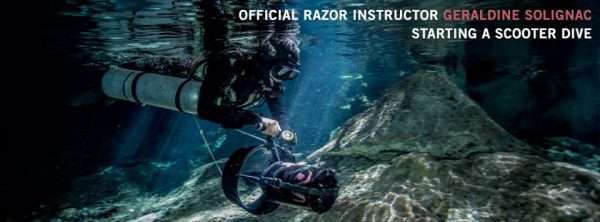
Basic Razor Side mount – Cave side mount instructor
The Razor harness and wing combined were designed by expert divers and cave explorers Steve Bogaerts and HP Hartmann, cofounders of Go Side Mount.
Years of experience and hours of side mount cave diving and exploration led to the Razor Side Mount System development. And along with it appeared the necessity of developing a course program to be taught by experienced instructors committed to high-quality standards: certified Razor instructors.
Above is a demonstration of the Razor harness performance at its early stages… It’s already extremely stable underwater. The BAT wing came later to make it even better. BAT stands for Buoyancy And Trim, and it delivers. Check out Steve Boegarts demonstrating some of the skills you will learn during your Razor Side Mount training (Video by HP Hartmann in the Cenotes of Mexico)
During the Razor Side Mount course, you will learn proper dive equipment configuration, including harness adjustment, cylinder configuration, regulator configuration, proper weighting, and weight distribution for the best trim.
We highly recommend you train with a certified Razor instructor using years of experience shared with you through the Razor Side Mount course. But be aware… Once you go Side Mount, you never go back!!
PREREQUISITES
- Certified Advanced Open Water Diver
- 25 logged dives beyond training dives
- Own your Razor side mount system: The course has to be in your own Razor Side Mount System complete as some of the skills are specific to the equipment.
DURATION
- 4 days Minimum
- Number of Dives: 6 minimum
- Theory *
*TDI e-learning at your own pace before the start of your dive training in the cenotes of Mexico
QUALIFICATIONS
- Maximum depth of 40 meters/130 feet
- No decompression dives
- Open Water side Mount dives
GEAR
- Primary cylinders with volume appropriate for diving conditions and diver gas consumption.
- Primary regulators (Primary and alternate second stage required on all primary cylinders, Submersible pressure gauges on all cylinders)
- Depth gauge and automatic bottom timer and/or dive computer.
- Razor system as Buoyancy compensator
- Razor student kit (pouch with back up bungee)
- Ascent reel with lift bag/surface marker buoy (Appropriate for maximum planned depth, Lift bag or surface marker buoy with adequate lift and size for the dive environment.
- Exposure protection appropriate for local diving conditions.
- Slates/wet-notes.
WHAT’S INCLUDED
- 6 dives min
- Academics*
- Tanks with Air or Nitrox 32%
- Weights
- Transport to the dive site
- Emergency Oxygen
- Drinking water
NOT INCLUDED
- Pick up
- Cenote entrance fees
- Certification Fee
- Gases >32% (Student and Instructor)
- Equipment
Why Razor? and why a Razor Side Mount Training?
When Steve Bogaerts and HP Hartmann come together to design a full set of gears from scratch and make it evolve into what it is today, you can expect something efficient and of high quality, and it is!
Many years of experience and many hours of Side Mount Cave diving have led to the Razor Side Mount System and the Razor Side Mount Course program.
And today, we are proud to be part of the team of Razor Instructors (Géraldine Solignac, Razor Side Mount Instructor) and to be able to share that knowledge with you and share all the fun that goes with it.
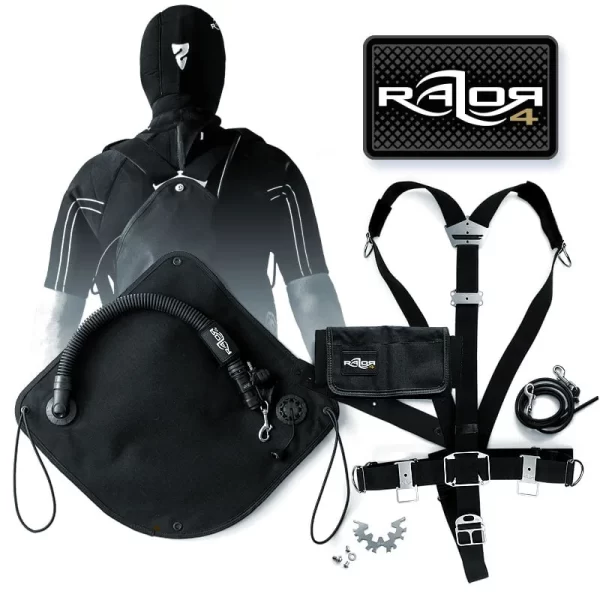
RAZOR 4 IS OUT! CONTACT US TO GET YOURS
ACADEMICS
- Physics: (Pressure review)
- Physiology (Ascent/descent rates, Hyperthermia, Hypothermia, Psychological aspects)
- Equipment Considerations (Single/double cylinder(s); valves, Regulators, Harness/BCD, Computer, bottom timer, depth gauge; Reels/spools; Lift bag/surface marker bag; Exposure protection; Minimum equipment, bring only what is needed; Streamlining and stowing equipment
- Dive Planning (Tables/computer dive planning and execution; Surface air consumption (SAC) rate calculations; Minimum gas reserve calculations for no-decompression dives; Environmental considerations)
- Procedures (Entry/exit strategies; Emergency strategies in case of gas failure/loss; Ascent/descent strategies)
LAND DRILLS
- Adjustment of the harness
- Cylinder configuration
- Regulator configuration
- Proper weighting and weight distribution for the best trim
- Set up your tanks
- Dress into the Razor system
- On land buddy check
- Pre-dive wing checks
PRE-DIVE DRILLS
- Use S.T.A.R.T. before every dive.
- Stress analysis and mitigation.
- Buddy check
* START is S-drill (OOG drill and Bubble Check), Team (buddy equipment checks), Air (gas matching), Route (entry/exit and planned path underwater), Tables (depth, duration, waypoints, and schedule)
SKILLS
- Enter the water
- Buddy check
- Descend
- Neutral buoyancy
- Trim
- Check and show the pressure
- Safe regulator switch
- Switch regulator with one hand (Right & Left)
- Helicopter turns
- Propulsion techniques (Modified frog kick, Modified flutter kick, Shuffle kick, Back kick
- Lateral turns
- Vertical turn
- Use expandable pouch
- Use of your B-ring
- Move tanks to front
- 3 ways Deploy long hose
- OOG stationary, ascend, swimming
- Restow the long hose
- Regulator free flow (Short hose, Long hose, Feathering)
- Valve drills
- Tank clip failures
- Bungee replacement
- Stage right tank
- Broken LPI hose
- Use of Bat Wing and backup wing
- Use SMB)
- Ascend and establish positive buoyancy
- Dressing out of the Razor system
- Weight check
- Perform all skills while maintaining trim and buoyancy
- Safety drill (S-drill)
- Good situational awareness.
TRAINING CENOTES
- Cenote Eden,
- Cenote Kukulkan
- Cenote Xtabay
- Cenote Carwash
- Cenote Chikin Ha
- Cenote XTabay,
- Cenote Taj Ma Ha
- Cenote Chac Mool
- and more…
WHAT’S NEXT
Why does it take a bit longer to become a Razor Side Mount Diver?
There are some Razor-specific dive skills. This is how long it takes to get a new Razor side mount diver to master the skills the way you will use them through your entire diver career, and your Razor harness and wing will take all those steps with you.
TDI NITROX DIVER CERTIFICATION
Welcome to the thrilling world of Nitrox diving – where adventure meets safety in the ocean’s depths! If you’re ready to take your scuba diving experience to new depths (literally), our Nitrox Diving Training is your gateway to exploring the underwater realm like never before.

Dive into the extraordinary and unlock the secrets of extended bottom times and reduced surface intervals with Nitrox. Our Training is designed for novice and experienced divers alike. Imagine gliding effortlessly through vibrant coral reefs and encountering mesmerizing marine life, all while enjoying the benefits of enriched air nitrox.
At Deep Dark Diving, we pride ourselves on providing top-notch scuba education, and our Nitrox Diving Training is no exception. Our experienced and certified instructors are dedicated to ensuring you not only grasp the fundamentals of nitrox diving but also gain the confidence to embark on a safer and more exhilarating underwater adventure.
Why choose Nitrox? Using a higher percentage of oxygen in your tank allows Nitrox for longer dive times and shorter surface intervals, enhancing your overall dive experience. Whether you’re a recreational diver seeking extended bottom time or an aspiring professional looking to expand your skill set, our Nitrox course is the key to unlocking a world of possibilities beneath the waves.

Don’t miss the chance to dive deeper, stay longer, and explore more. Join us at Deep Dark Diving for an unforgettable Nitrox Diving.
This simple one-day Training can be done in a matter of hours and is a “dry course.” You can technically reach Nitrox certification without going underwater, even though you probably don’t want to miss the fun part?! Don’t hesitate to combine the Nitrox diver Training with a fun Cenote dive and get the most out of it!
Double benefit: More time underwater, where you like, and shorter surface intervals!
Why become a Nitrox Diver?
- Learn more about nitrox mixtures
- Extend your bottom time
- Less surface interval
- Do repetitive dives
- Move forward with technical diving education
PREREQUISITES
- Minimum age 18, 15 with parental consent
- Minimum certification: Open Water Scuba Diver or equivalent
- 25 logged dives
DURATION
- 2 days Minimum
- Two nitrox dives are recommended but are not required
- Theory: 3 h minimum *
*TDI e-learning at your own pace before the start of your dive training in the cenotes of Mexico
QUALIFICATIONS
- Dive utilizing EAN-22 to EAN-40 without direct supervision
- Ability to enroll in TDI Advanced Nitrox, TDI Decompression Procedures, TDI Semi-closed Rebreather courses
- The training program does not qualify divers to make dives which require mandatory in-water decompression stops or dives using more than one breathing gas and/or rebreathers
GEAR
- Nitrox cylinder for analyzing
- Nitrox analyzer
- Regular modern scuba equipment
- Dive computers
- Oxygen-serviced Scuba tanks dedicated for use with enriched air
- Oxygen analyzers
- Special cylinder labelling.
WHAT’S INCLUDED
- 2 dives min
- Academics*
- Tanks
- Weights
- Transport to the dive site
- Emergency Oxygen
- Drinking water
NOT INCLUDED
- Pick up
- Cenote entrance fees
- Certification Fee
- Gases >32% (Student and Instructor)
- Equipment
ACADEMICS
- History of Enriched Air Nitrox (EAN)
- Physiology (Oxygen, Nitrogen)
- Physics (Pressure review, Partial pressures)
- Equipment Considerations (< 40% and > 40 % O2)
- Dive Tables (EAD), EAN tables, Switching mixes on repetitive dives)
- Dive Computers (Mix adjustable, Oxygen (O₂) integrated)
- Advantages and Disadvantages of EAN (physiological, extend no-decompression bottom times or shorten surface intervals, Oxygen toxicity and depth limits, myths and facts)
- Procedures (oxygen analyzer, Gas analysis and logging, MOD and oxygen content)
- Common Mixing Procedures (Partial pressure blending, Continuous blending, Membrane separation system)
LAND DRILLS
- Use TDI Tables with EAD calculations
- Create a dive plan for a nitrox dive to a maximum operating depth (MOD) calculated with PO₂ between 1.3 and 1.6 depending on environmental conditions
- Use of oxygen analyzer
- Cylinder management and labeling
- Pre-dive briefing
- Program nitrox computer
- Log at least 1 nitrox cylinder analysis to include: MOD and oxygen content
PRE-DIVE DRILLS
- Use S.T.A.R.T. before every dive.
- Stress analysis and mitigation.
* START is S-drill (OOG drill and Bubble Check), Team (buddy equipment checks), Air (gas matching), Route (entry/exit and planned path underwater), Tables (depth, duration, waypoints, and schedule)
SKILLS
No Underwater skills are required for this certification.
However, we have noted a poor understanding and use of Nitrox and Oxygen analysers, including among certified Tech divers.
This course is the foundation, make sure you instructor explains clealy and you get your hands on the analyser with a full understanding
TRAINING CENOTES
- Cenote Eden,
- Cenote Kukulkan
- Cenote Xtabay
- Cenote Carwash
- Cenote Chikin Ha
- Cenote XTabay,
- Cenote Taj Ma Ha
- Cenote Chac Mool
- and more…
WHAT’S NEXT
- Advanced Nitrox
- Decompression Procedures
- Specialty courses (Deep, Cavern, Sidemount, PPB, DPV…)
- CCR, Rebreather Diving
What you will learn during your Nitrox Diver Training
- Techniques for getting more dive time by using enriched air nitrox
- The benefits, hazards, and proper procedures for using nitrox mixes from 22 through 40 percent oxygen content
- Analyzing oxygen content in your scuba tank.
- Enriched air considerations, including managing oxygen exposure
- Enriched air scuba diving equipment considerations, cylinder labeling, analyzing nitrox mixtures, and gas blending procedures
- Set your dive computer for diving with enriched air nitrox.
Structure of the Nitrox Diver Training
- There are two options for this Course:
Option one: Standard Course in combination with other training
Option two: Course with 2 Cenotes dives with Nitrox
ADVANCED NITROX DIVER CERTIFICATION
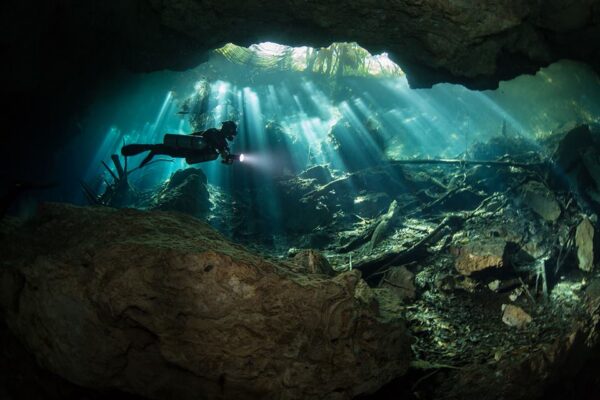
The use of oxygen and oxygen-enriched air mixture is critical to advanced applications in diving. The Advanced Nitrox course will arm you with the knowledge and understanding of the risks and benefits associated with these gases.
The TDI Advanced Nitrox course is an excellent introduction to Technical Diving. You will complete deep dives to 130ft/40m in the safest manner possible with no stage decompression and using Nitrox up to 100% oxygen. You will tune up your buoyancy control in a new configuration and work on stress management and problem-solving. And, very important in technical diving, you will plan your dives.
This TDI Advanced Nitrox certification combines perfectly with the Decompression Procedures course and will be the foundation of your technical diving career and, of course, give you a better understanding of technical diving.
Objectives of the Advanced Nitrox Training
- Extend your dive time safely!
- It is ideal for scientific divers, photographers, or divers simply wishing to stay underwater longer.
- Use a mixture containing up to 100% oxygen.
- Entry-level tech course
- There is no need for big configuration changes: only one extra tank
Some direct applications of Advanced Nitrox Skills
- Hyperoxic mixes significantly increase bottom time at moderate depth.
- Mixes of high Oxygen considerably accelerate decompression.
- Advanced Nitrox training is a Prerequisite to Rebreather diving.
PREREQUISITES
- Minimum age 18, 15 with parental consent
- Minimum certification: Open Water Scuba Diver or equivalent
- 25 logged dives
DURATION
- 3 days Minimum
- Number of Dives: 4 minimum (> 100 minutes bottom time)
- Theory: 6 hours minimum + e-learning *
*TDI e-learning at your own pace before the start of your dive training in the cenotes of Mexico
QUALIFICATIONS
- Maximum depth of 40 meters/130 feet
- No decompression dives
- Nitrox mixes up to 100% Oxygen
GEAR
- Alternative second stage attached to a primary regulator or a redundant scuba unit; 1.9 litre/13 cu ft minimum.
- SPG
- Depth gauge and bottom timer and/or dive computer.
- BCD with power inflator. 5. Line cutting device.
- Exposure suit adequate for the open water environment.
- Cylinder and regulator properly labeled and cleaned as required for EAN mixtures.
- Oxygen analyzer may be supplied by instructor
WHAT’S INCLUDED
- 4 dives min
- Academics*
- Tanks
- Weights
- Transport to the dive site
- Emergency Oxygen
- Drinking water
NOT INCLUDED
- Pick up
- Cenote entrance fees
- Certification Fee
- Gases >32% (Student and Instructor)
- Equipment
ACADEMICS
- Physics (Pressure review)
- Physiology (Hypoxia, Oxygen toxicity, Nitrogen narcosis, Nitrogen absorption and elimination, CO2 toxicity, CO toxicity
- Formula Work: Best mix, MOD
- Equipment Considerations: < 40 & > 40 % O2
- Dive Tables: EAD
- Computer generated tables
- Dive Computers
- Dive Planning
- Gas requirements (Oxygen, Nitrogen limitations)
- Mixing Procedures (Partial pressure, Continuous, Membrane)
- Decompression (EAN or O₂ as a deco gas) Advantages/disadvantages of multiple gas switches.
LAND DRILLS
- Review of nitrox skills
- Use of oxygen analyzer and calibration
- Pre-dive planning (personal gas consumption, oxygen exposures, nitrogen absorption)
- Calculate and log CNS loading
- Gas labeling
- Prep of equipment for O₂ service
- Program nitrox computer
- Execute the planned dive
PRE-DIVE DRILLS
- Use S.T.A.R.T. before every dive.
- Stress analysis and mitigation.
* START is S-drill (OOG drill and Bubble Check), Team (buddy equipment checks), Air (gas matching), Route (entry/exit and planned path underwater), Tables (depth, duration, waypoints, and schedule)
SKILLS
- Buoyancy control
- Team awareness, communications, proximity, and team-oriented dive practices.
- Manage free flow from primary regulator, shutdown cycle, and switch to back-up
- Safety stop
- Share gas (recipient and donor)
- Body position; trim
- Stress analysis with self and dive buddy.
TRAINING CENOTES
The theory portion of the Advanced Nitrox course starts with the e-learning at your own pace then conducted in the classroom at Deep Dark Diving and during the briefings and debriefings. Confined water skills are practiced in shallow water in the cenotes such as Cenote Eden, Cenote Orquidea, and execution dives are completed in deep Cenotes, such as Cenote Angelita, Cenote Yaakun, Cenote Maravilla, Cenote Kin Ha.
- Cenote Eden,
- Cenote Kukulkan
- Cenote Xtabay
- Cenote Carwash
- Cenote Chikin Ha
- Cenote XTabay,
- Cenote Taj Ma Ha
- Cenote Chac Mool
- and more…
WHAT’S NEXT
Why not start your CCR diving journey? Please read our blog for key criteria on how to choose a rebreather.
What you will learn during the Advanced Nitrox Certification
- Learn Physics and physiology associated to diving with gas mixes containing more than 40% oxygen
- Gas planning, dive tables, dive computers, oxygen, and nitrogen exposures limitations
- Equipment considerations: cylinder labeling, nitrox mixtures analyzing, gas blending procedures, and oxygen service ratings for gases with more than 40% oxygen
Skills you will perform to become an Advanced Nitrox Diver
Most of your underwater training will occur in the Cenotes. These dive sites are not only magical and unique, but there are also many advantages to training in the Cenotes.
- Polishing of buoyancy and swimming techniques
- Good awareness and team-oriented dive practices
- Free-flowing regulator, valves shut down, and regulator switch
- Safety stops in neutral buoyancy
- Share gas with a buddy
- Position, trim, streamline
- Stress analysis of personal and other team members
DECO PROCEDURES DIVER CERTIFICATION – ANDP
The TDI deco procedures training is an exciting step further into your dive career. After your training, you will know how to plan and execute deep dives, stay longer underwater and perform mandatory deco stops safely.
At this level, you can still train in your properly configured recreational gear with just a single extra tank for the deco gas. Therefore, you will only need an extra regulator and stage rig, and you can still join regular dive operations.
This configuration is a great option for going on a little deeper and longer dives while greatly increasing your safety, skills, and knowledge with minimal extra investment in dive gear, which is a great advantage.
Do you want to dive deeper and become a serious tech diver?
If you are still a recreational diver but already know tech diving is for you, this course should be combined with or follow an Intro to tech training (learn how to dive in a twinset) or a Side Mount course.
At Deep Dark Diving, all instructors have experience in technical diving in both configurations, diving in caves and the ocean, and can objectively answer any questions about the pros and cons.
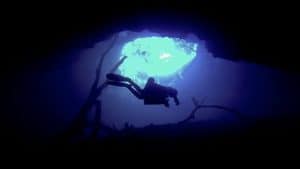


Try dives in back mount or side mount configuration.
If you still have not decided between back mount or Side Mount, Deep Dark Diving offers try-dives in both configurations.
One day per configuration, we discuss the advantages and disadvantages of the configuration in different dive environments.
We perform basic safety drills and discuss all the required drills during each course.
We go for a fun dive so you can get a real-life experience and a good feel for the experience.
You then know in detail what will be expected from you for an Intro to tech certification versus a side mount certification.
If you still have not decided between back mount or Side Mount, Deep Dark Diving offers try-dives in both configurations.
One day per configuration, we discuss the advantages and disadvantages of the configuration in different dive environments.
We perform basic safety drills and discuss all the required drills during each course.
We go for a fun dive so you can get a real-life experience and a good feel for the experience.
You then know in detail what will be expected from you for an Intro to tech certification versus a side mount certification.
Is TDI Advanced Nitrox Certification Mandatory?
Although not mandatory, you will get the best out of this Deco procedures training if you are an Advanced Nitrox diver. You can use mixes above 40% oxygen for your deco, making it significantly shorter and more efficient. Of course, Deep Dark Diving can combine Decompression Procedures and Advanced Nitrox.
Combining Intro to Tech or Side Mount, Advanced Nitrox, and Deco Procedures training will be the foundation of all your future technical diving.
What’s in the TDI Decompression Procedures Course
Objectives of the Deco Procedures Training
- Longer bottom time
- Safely execute decompression dives
- Dive deeper
- Look deeper into the decompression theory
- Extend your diving techniques


PREREQUISITES
- Minimum age 18
- Minimum certification of SDI Advanced Adventure Diver, Advanced Diver, or equivalent
- 25 logged open-water dives
- Recommended: Advanced Nitrox
DURATION
- 3 days Minimum
- Number of Dives: 4 minimum (including 2 dives below 30 meters / 100 feet)
- Theory *
- ANDP – Adv. Nitrox + Deco Procedures: 6 dives minimum
*TDI e-learning at your own pace before the start of your dive training in the cenotes of Mexico
QUALIFICATIONS
- Maximum depth: 45 meters/150 feet
GEAR
- Primary cylinders, Independent or isolated back-mounted
- Decompression mix cylinder(s) (with submersible pressure gauge and Labeled)
- Depth gauge and bottom timer and/or dive computer
- Regulator(s)
- Buoyancy compensator device(s) (BCD) adequate for equipment configuration
- Line cutting device
- Ascent reel with lift bag /surface marker buoy
- An oxygen (O2) analyzer; may be supplied by the instructor
- Exposure suit adequate for the open water environment
- Underwater slate
WHAT’S INCLUDED
- dives min
- Academics*
- Tanks
- Weights
- Transport to the dive site
- Emergency Oxygen
- Drinking water
NOT INCLUDED
- Pick up
- Cenote entrance fees
- Certification Fee
- Gases >32% (Student and Instructor)
- Equipment
ACADEMICS
LAND DRILLS
- Choosing the Decompression gas
- Dive Tables and personal dive computers
- Emergency and contingency plans (equipment failure, omitted decompression, etc.)
PRE-DIVE DRILLS
- Use S.T.A.R.T. before every dive.
- Stress analysis and mitigation.
* START is S-drill (OOG drill and Bubble Check), Team (buddy equipment checks), Air (gas matching), Route (entry/exit and planned path underwater), Tables (depth, duration, waypoints, and schedule)
SKILLS
- Decompression diving procedures
- Choosing the equipment and configuration
- Pre-dive checks and drills
- Stress analysis and mitigation
- Following a decompression schedule
- Gas switching
- Team awareness and communication
- SMB/lift bag deployment
- Proper trim, buoyancy, and finning techniques
- Emergency procedures (equipment failures, gas loss, omitted decompression, navigational errors, etc.)
- Equipment considerations, cylinder labeling, analyzing nitrox mixtures, and gas blending procedures
TRAINING CENOTES
Most of your underwater training will occur in the Cenotes, they are not only magical and unique dive sites, there are also lots of advantages in training in the Cenotes.
Some of the sites you may visit to perferct your skills: Cenote Eden, Cenote Angelita, Cenote Orquidea, Cenote Maravilla, Cenote Kin Ha, Cenote Yaakun, Laguna Kan Luum and more…
- Cenote Eden,
- Cenote Kukulkan
- Cenote Xtabay
- Cenote Carwash
- Cenote Chikin Ha
- Cenote XTabay,
- Cenote Taj Ma Ha
- Cenote Chac Mool
- and more…
WHAT’S NEXT
TDI TRIMIX DIVER CERTIFICATION
Dive Deeper with TDI Trimix Certification
Are you ready to push the boundaries and dive into the depths where few have gone before? The TDI Trimix Diver course is the key to safe, deeper diving. This course is designed for Tech divers who seek to explore the underwater world below 40 meters (130 feet) with enhanced safety and extended bottom times, allowing for a better and safer diving experience.
And there are no better dive sites to start this thrilling journey than the cenotes of Mexico.
Trimix diving refers to diving with a breathing gas mixture consisting of oxygen, nitrogen, and helium. By introducing helium into the gas blend, divers can minimize the narcotic effects of nitrogen at greater depths, allowing for safer and clearer-headed dives below the 40-meter recreational limit. Trimix is essential for deep dives that venture beyond the limits of air and nitrox, offering greater control over the physiological challenges of diving deep.
Who is the TDI Trimix Diver Course For?
The TDI Trimix course is designed for experienced divers who are already comfortable with technical diving principles and are looking to expand their skill set. It’s ideal for:
- Technical Divers who already hold an advanced diving certification, have experience in technical diving and are familiarity with decompression procedures.
- Divers Seeking to Explore Deeper Sites: deep shipwrecks, underwater caves, or specific geological features beyond recreational diving depths.
- Cave and Cenote Enthusiasts: The cenotes of Mexico are perfect for deep exploration. With their clear waters and fascinating submerged caverns, they provide the perfect environment for learning how to handle the complexities of deep trimix diving.
- Experienced Divers Wanting Extended Bottom Time: If you’re seeking to explore deep dive sites without the limitations of shorter air or nitrox dives, trimix allows for more extended and safer bottom times at greater depths.
Before enrolling, it’s important to note that this is a challenging course that demands dedication, technical precision, and the ability to handle advanced dive planning and equipment.
PREREQUISITES
- Minimum age 18, 15 with parental consent
- Minimum certification: Open Water Scuba Diver or equivalent
- 25 logged dives
DURATION
The TDI Trimix Diver course typically lasts 5 to 7 days. It involves theoretical instruction, land-based practices, and a series of in-water training dives designed to give you hands-on experience with trimix diving procedures.
- 6 days Minimum
- Number of Dives: minimum
- Theory
*TDI e-learning at your own pace before the start of your dive training in the cenotes of Mexico
QUALIFICATIONS
GEAR
WHAT’S INCLUDED
- All academical and practical instruction
- Double tanks, stage and deco cylinders, with breathing gases up to 32%
- A series of at least four trimix training dives, conducted at progressively greater depths
- Dive computer and decompression software training
- dives min
- Academics*
- Tanks
- Weights
- Transport to the dive site
- Emergency Oxygen
- Drinking water
NOT INCLUDED
- Pick up
- Cenote entrance fees
- Certification Fee
- Gases >32% (Student and Instructor)
- Equipment
ACADEMICS
Before jumping in the water, you’ll receive education in the theory and practice of trimix diving through e-learning, classroom and dive briefings, and debriefings. The academic portion of the course will cover essential topics such as:
- Gas Physiology and the Effects of Helium: Learn how the components of trimix affect your body at depth, focusing on limiting narcosis and understanding gas density.
- Decompression Theory: Detailed instruction in decompression models and the importance of staged decompression for dives exceeding non decompression limits (NDL).
- Gas Management: Learn how to manage multiple gas cylinders, calculate gas consumption rates (SAC rates, RMV), and choose appropriate gases for each phase of the dive.
- Dive Planning: Learn meticulous dive planning, including gas switches, bailout procedures, and decompression schedules.
- Equipment Configuration: Properly configure technical diving gear, including stage and deco cylinders, double tanks (twinset or sidemount), and decompression gases. This portion of the Trimix Diving Training also includes thorough pre-dive checks and failure management procedures.
LAND DRILLS
PRE-DIVE DRILLS
- Use S.T.A.R.T. before every dive.
- Stress analysis and mitigation.
* START is S-drill (OOG drill and Bubble Check), Team (buddy equipment checks), Air (gas matching), Route (entry/exit and planned path underwater), Tables (depth, duration, waypoints, and schedule)
SKILLS
Once the theoretical foundation is laid, the underwater adventure begins with a series of training dives that will take you deeper than ever before. Conducted in the cenotes of Mexico, these dives offer perfect conditions for learning the skills of a trimix diver.
- Controlled Descent and Ascent Practices: You’ll practice slow, controlled descents to depths beyond 40 meters, paying close attention to gas switching, narcosis management, and gas consumption rates. The environment of the cenotes allows for calm, focused and repetitive training dives.
- Staged Decompression: You’ll manage staged decompression stops using different gas mixtures to ensure a safe ascent from deep dives.
- Gas Switching: The ability to switch between breathing gases during a dive is critical to trimix diving. You’ll learn to execute these procedures flawlessly underwater.
- Problem Solving at Depth: Unexpected issues can arise during deep dives, and you’ll practice drills for equipment malfunctions, gas supply problems, and team management at depth.
- Cave and Overhead Environment Techniques: The cenotes offer the perfect setting for practicing trimix diving in an overhead environment. You’ll learn to manage buoyancy and trim in tight spaces, honing your skills in an extraordinary natural setting.
TRAINING CENOTES
Cenotes offer stable water conditions—minimal current, excellent visibility, and consistant temperature—which makes them a perfect dive training ground for developing advanced technical diving skills.
Some of the dives sites we will visit include Cenote Eden, Cenote Angelita, Cenote Orquidea, Cenote Maravilla, Cenote Kin Ha, Cenote Yaakun, Laguna Kan Luum and more…
- Cenote Eden,
- Cenote Kukulkan
- Cenote Xtabay
- Cenote Carwash
- Cenote Chikin Ha
- Cenote XTabay,
- Cenote Taj Ma Ha
- Cenote Chac Mool
- and more…
WHAT’S NEXT
The underwater world is waiting—are you ready to explore it?
There’s no better place for the TDI Trimix Diver course than the cenotes of Mexico. Step beyond the boundaries of recreational diving, and challenge the depths with Deep Dark Diving.
TDI EXTENDED RANGE DIVER CERTIFICATION
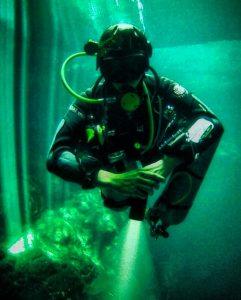
The TDI Extended Range Dive Course program is designed to take your diving to new depths up to 55 meters (180 feet) using compressed air as a bottom gas, in regions where helium is either inaccessible or severely limited.
The key to successful deep exploration lies in proper equipment, training and constant practice. For deep dives you have to equip yourself with the right tools, such as tanks with redundancy or Technical dive computers.
Dangers associated with deep diving
Nitrox and oxygen decompression stops
As you consider your next scuba diving adventure, let the TDI Extended Range course be your compass to depths beyond 180 feet. Immerse yourself in the wonders of the underwater world, equipped with the skills and knowledge needed for a safe and thrilling journey. Dive into the TDI Extended Range course and embrace the allure of exploration, where every dive is a new chapter in your underwater odyssey. Your next adventure awaits – are you ready to dive deeper?
Extended Range diving applications: Must-Experience Dives

- Helium-Free Exploration
- Shipwrecks,
- Deep coral reefs,
- Pelagic creatures encounters in their natural habitat
Objectives of the Extended Range Diving Training

- Spectacular dives deeper than 39 meters/130 feet
- No access to helium
- Learn the proper techniques for safely using compressed air as a breathing gas
- Staged decompression (with nitrox or oxygen)
- Maximum depth of 55 meters/180 feet
PREREQUISITES
- Minimum age 18
- Advanced Nitrox and Decompression Procedures Diver, or equivalent
- Proof of a minimum of 100 logged dives, including 25 dives deeper than 30 meters/100 feet
DURATION
- days Minimum
- Number of Dives: minimum
- Theory *
*TDI e-learning at your own pace before the start of your dive training in the cenotes of Mexico
QUALIFICATIONS
GEAR
WHAT’S INCLUDED
- 4 dives min
- Academics*
- Tanks
- Weights
- Transport to the dive site
- Emergency Oxygen
- Drinking water
NOT INCLUDED
- Pick up
- Cenote entrance fees
- Certification Fee
- Gases >32% (Student and Instructor)
- Equipment
ACADEMICS
- History of deep air diving
- Physics
- Physiology
- Decompression Options (Air, Nitrox, Oxygen)
- Equipment considerations
- Dive planning
- Technical dive support
- Navigation
LAND DRILLS
PRE-DIVE DRILLS
- Use S.T.A.R.T. before every dive.
- Stress analysis and mitigation.
* START is S-drill (OOG drill and Bubble Check), Team (buddy equipment checks), Air (gas matching), Route (entry/exit and planned path underwater), Tables (depth, duration, waypoints, and schedule)
SKILLS
- Use START before every dive
- Stress analysis and mitigation
- Gas matching procedures
- Demonstrate buoyancy control
- Good awareness, communications, proximity, and team-oriented dive practices
- Manage 2 stage cylinders,
- Gas switches
- Lift bag deployment
- Air-sharing ascent
- Contingency decompression schedule
- Remove and replace mask, deploy back up mask
- Tired diver tow
- Breath-hold swim
- Execute the planned dive
- Switching and isolating a malfunctioning regulator,
- Navigational techniques
- Ascent with ascent reel and lift bag and perform staged decompression
TRAINING CENOTES
Most of your underwater training will occur in the Cenotes, they are not only magical and unique dive sites, there are also lots of advantages in training in the Cenotes.
Some of the sites you may visit to perferct your skills: Cenote Eden, Cenote Angelita, Cenote Orquidea, Cenote Maravilla, Cenote Kin Ha, Cenote Yaakun, Laguna Kan Luum and more…
- Cenote Eden,
- Cenote Kukulkan
- Cenote Xtabay
- Cenote Carwash
- Cenote Chikin Ha
- Cenote XTabay,
- Cenote Taj Ma Ha
- Cenote Chac Mool
- and more…
WHAT’S NEXT
CAVE DIVING TRAINING
